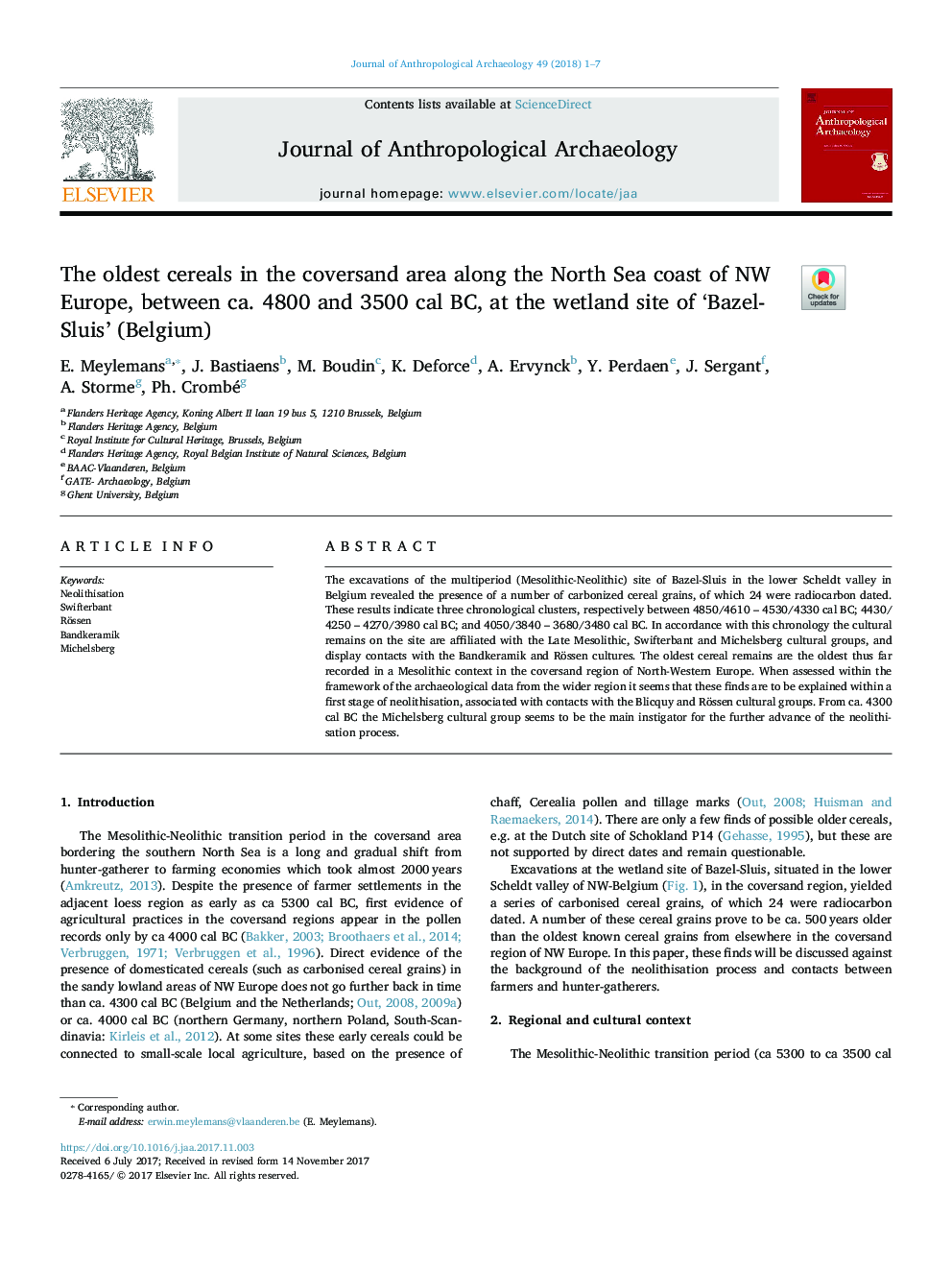| Article ID | Journal | Published Year | Pages | File Type |
|---|---|---|---|---|
| 7440413 | Journal of Anthropological Archaeology | 2018 | 7 Pages |
Abstract
The excavations of the multiperiod (Mesolithic-Neolithic) site of Bazel-Sluis in the lower Scheldt valley in Belgium revealed the presence of a number of carbonized cereal grains, of which 24 were radiocarbon dated. These results indicate three chronological clusters, respectively between 4850/4610 - 4530/4330 cal BC; 4430/4250 - 4270/3980 cal BC; and 4050/3840 - 3680/3480 cal BC. In accordance with this chronology the cultural remains on the site are affiliated with the Late Mesolithic, Swifterbant and Michelsberg cultural groups, and display contacts with the Bandkeramik and Rössen cultures. The oldest cereal remains are the oldest thus far recorded in a Mesolithic context in the coversand region of North-Western Europe. When assessed within the framework of the archaeological data from the wider region it seems that these finds are to be explained within a first stage of neolithisation, associated with contacts with the Blicquy and Rössen cultural groups. From ca. 4300 cal BC the Michelsberg cultural group seems to be the main instigator for the further advance of the neolithisation process.
Keywords
Related Topics
Social Sciences and Humanities
Arts and Humanities
History
Authors
E. Meylemans, J. Bastiaens, M. Boudin, K. Deforce, A. Ervynck, Y. Perdaen, J. Sergant, A. Storme, Ph. Crombé,
